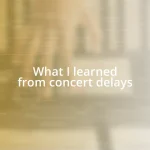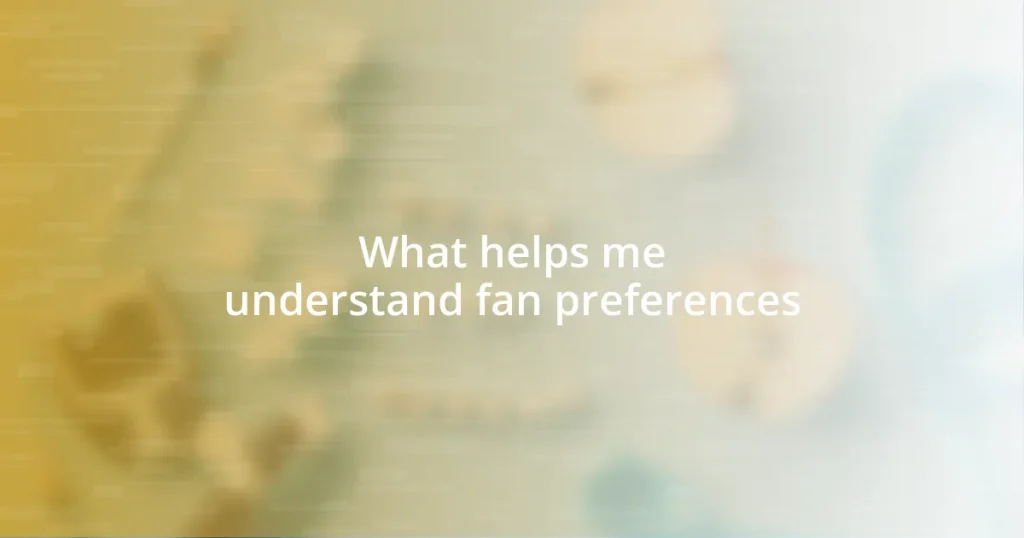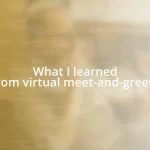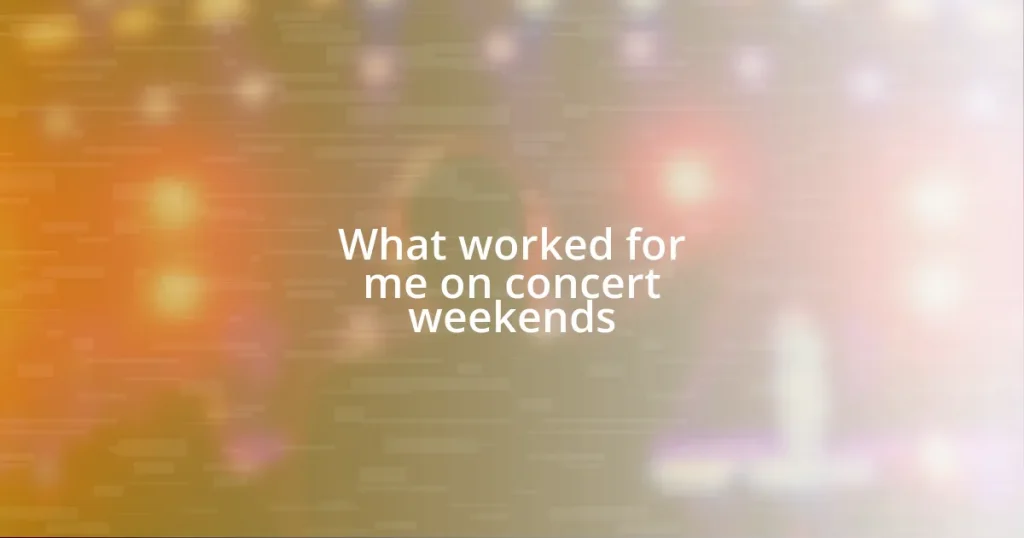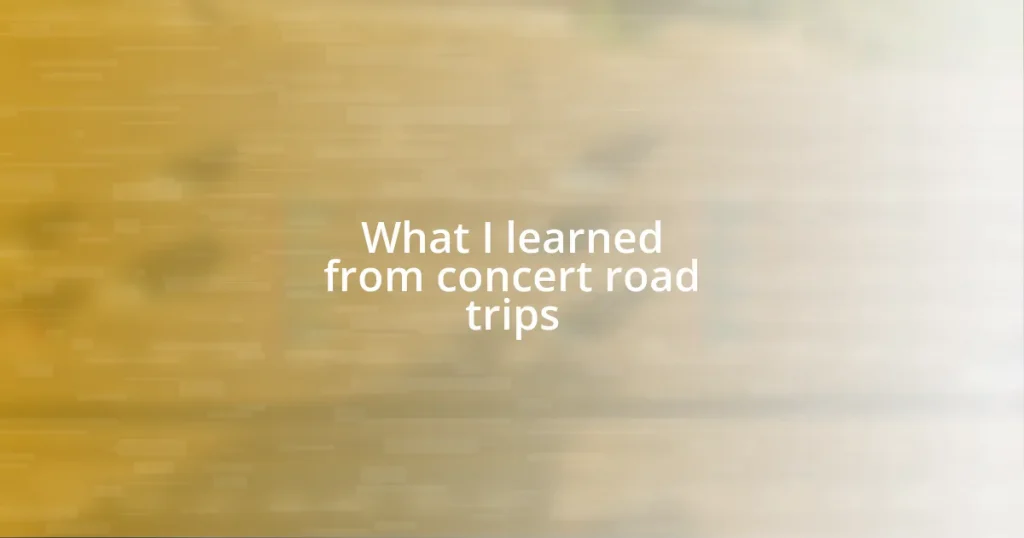Key takeaways:
- Understanding fan preferences requires delving into emotional connections and personal experiences that shape loyalty.
- Engaging with fans builds trust, strengthens community, and provides valuable feedback for brands.
- Analyzing demographics, interests, and social media insights can tailor marketing strategies and enhance fan connections.
- Surveys and storytelling create deeper engagement and can significantly influence fans’ loyalty to brands.
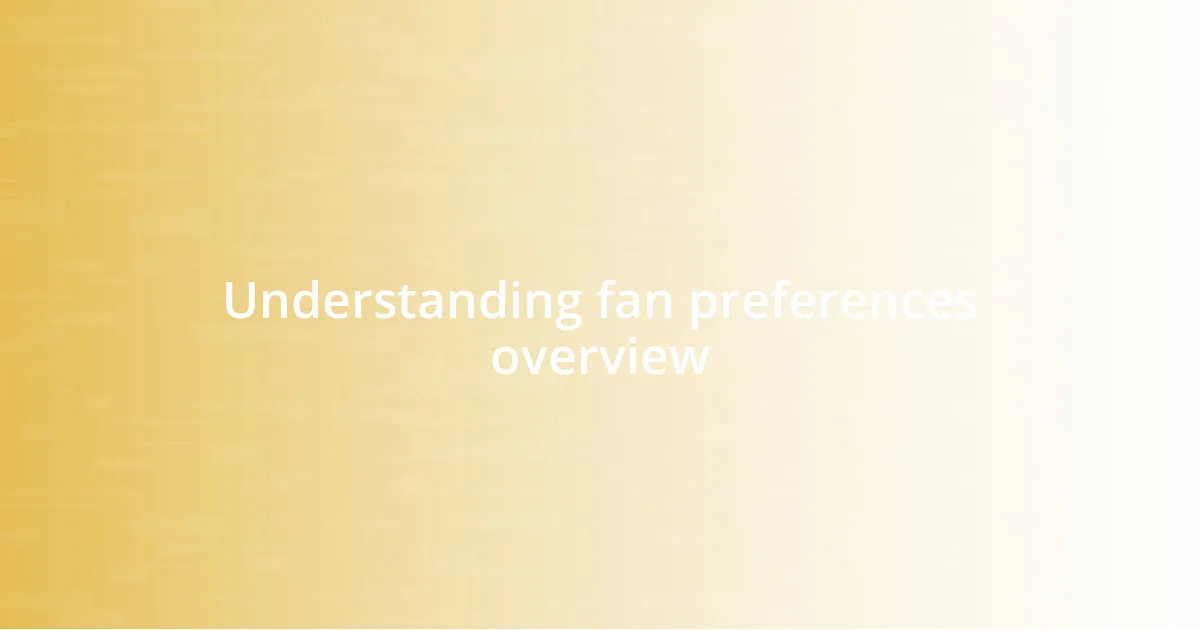
Understanding fan preferences overview
Understanding fan preferences is a nuanced endeavor. To truly grasp what drives fans, one must delve beyond surface-level trends and insights. I remember attending a concert where the energy surged as certain songs played, revealing how deeply embedded preferences can influence the atmosphere.
Fans often have emotional connections to specific elements, whether it’s a particular artist’s style, a team’s history, or even a memorable moment that struck a chord with them. Have you ever noticed how some fans light up when discussing their favorite niche within a larger genre? This illustrates the uniqueness of personal experiences that shape preferences and deepen loyalty.
Moreover, exploring fan preferences isn’t just about what they like; it’s also about understanding what they value. For instance, I once participated in a discussion with fellow enthusiasts who revealed the criteria they use to judge authenticity in music. These discussions cultivate a rich tapestry of insights, drawing attention to the emotional and psychological factors behind preferences that are often overlooked.
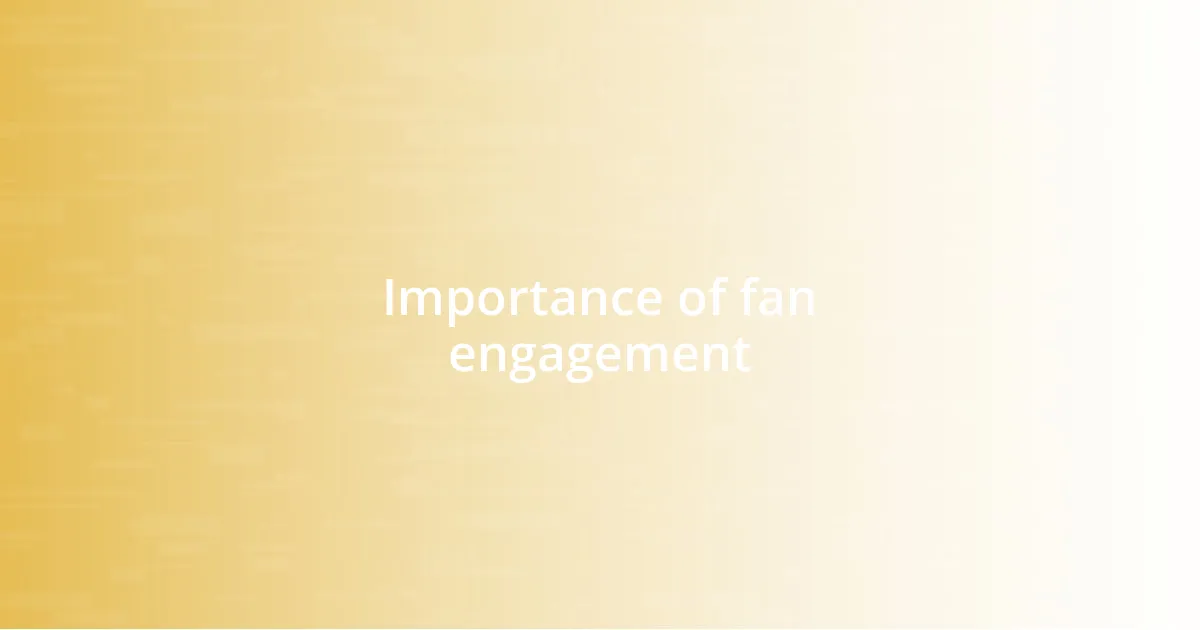
Importance of fan engagement
Engaging with fans goes beyond mere interaction; it builds a bridge of trust and loyalty. I recall my excitement when a beloved band responded to a tweet I had sent them. It felt as if my voice matched theirs for just a brief moment, solidifying my connection. Such moments emphasize how vital fan engagement is in creating a passionate community that feels valued and recognized.
- Increased Loyalty: Fans are likely to stick around when they feel personally connected to the artists or teams they support.
- Emotional Investment: Engagement fosters deeper emotional connections, driving fans to advocate for their favorites.
- Community Building: Engaged fans often come together, forming communities that enhance the overall experience and offer support.
- Valuable Feedback: When fans are encouraged to share their thoughts, they provide invaluable insights that can help shape future content or experiences.
- Memorable Experiences: The more fans engage, the more likely they are to create unforgettable memories tied to their favorite artists or teams.
Every interaction contributes to a larger narrative that fans feel compelled to be a part of, turning casual listeners into devoted advocates in the process.
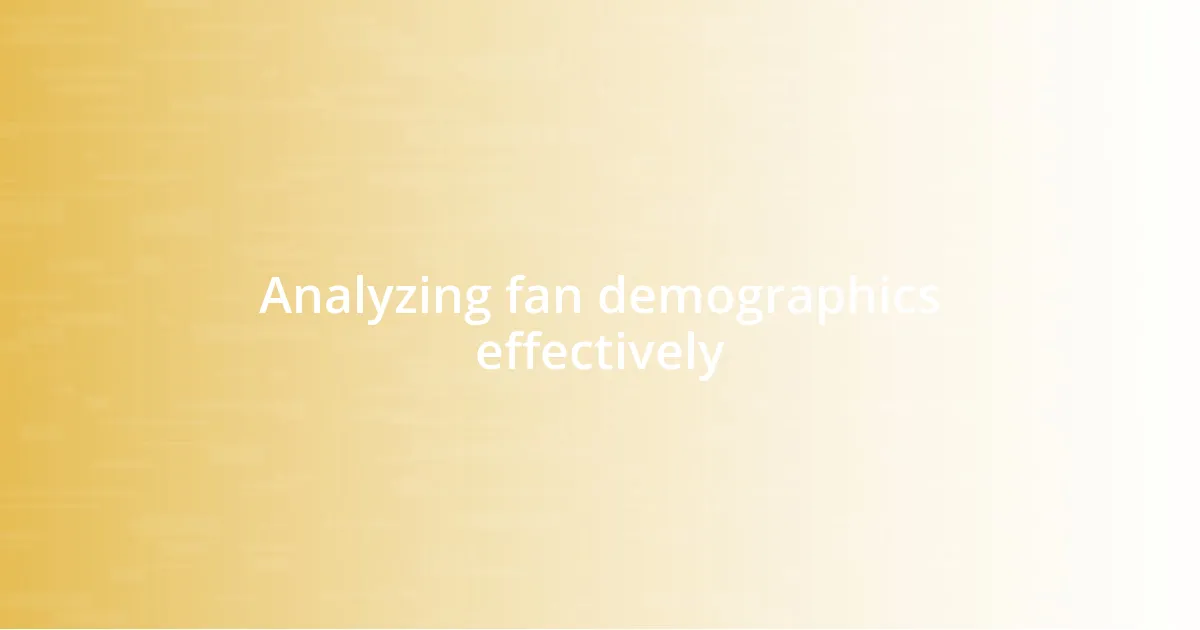
Analyzing fan demographics effectively
Understanding fan demographics effectively hinges on recognizing how age, location, and interests shape preferences. For instance, I once attended a local music festival where the crowd was predominantly younger, revealing a strong inclination for certain genres. This experience taught me that age can significantly impact musical taste, suggesting that brands should tailor their marketing strategies accordingly.
In my journey through various fan communities, I’ve seen how location influences everything from concert attendance to merchandise choices. While fans in urban areas often thrive on accessibility and diversity, those in rural settings may develop deep-seated loyalty to regional favorites. It’s fascinating to consider how these geographical factors can create distinct subcultures within larger fandoms.
Analyzing the interests of fans, beyond their primary obsessions, can also unveil unexpected preferences. During a recent online forum, I was surprised to find that many hardcore rock enthusiasts also enjoyed classical music. This layered understanding helps in crafting targeted content that resonates deeply, guiding brands to build connections that feel genuine and personalized.
| Demographic Factor | Impact on Fan Preferences |
|---|---|
| Age | Influences genre preference; younger fans may prefer current trends. |
| Location | Affects access to events and loyalty to local artists; urban vs. rural fans. |
| Interests | Underlying preferences can reveal unexpected connections. |
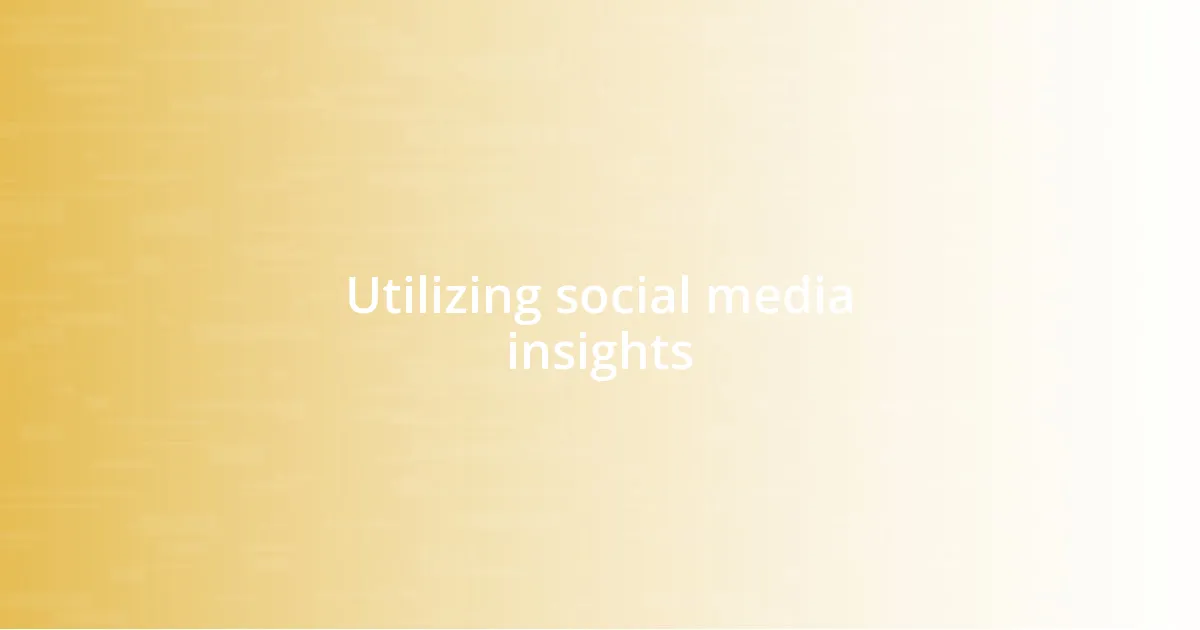
Utilizing social media insights
Utilizing social media insights offers a treasure trove of information about fan preferences. I’ve found that platforms like Twitter and Instagram often serve as real-time feedback loops, capturing fans’ reactions and opinions on new releases and performances. It’s like eavesdropping on a vibrant conversation where each comment reveals valuable insights about what resonates with them.
For instance, I remember scrolling through a live event hashtag during a concert I attended. Fans were posting their favorite moments, and amidst the excitement, I noticed trends—specific songs sparked joy and nostalgia. This kind of feedback is gold for artists and brands looking to refine their offerings. By analyzing popular hashtags, brands can gauge the emotions tied to particular moments and adjust their strategies accordingly.
Moreover, monitoring social media engagement metrics can highlight deeper emotional connections. Once, I saw a fan share a heartfelt story about how a song helped them through a tough time. It struck me that the way fans relate to content goes beyond mere enjoyment; it’s profoundly personal. How often do we consider the stories behind the likes and shares? By tapping into these narratives, brands can create a more profound connection that engages fans on a deeper level.
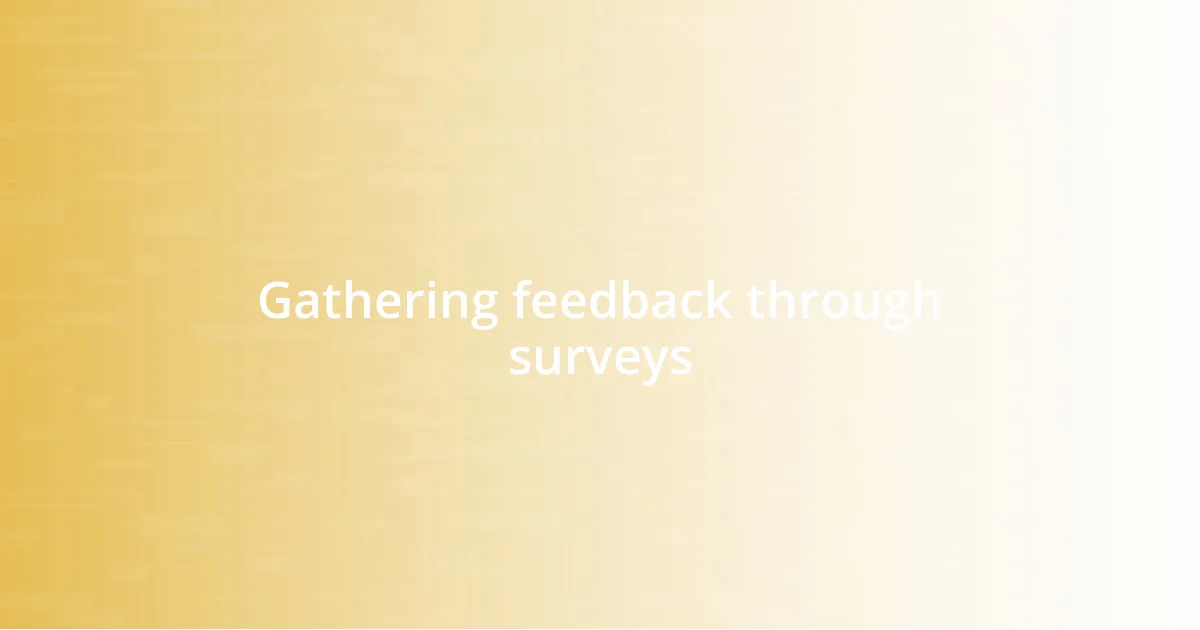
Gathering feedback through surveys
Gathering feedback through surveys can be one of the most insightful ways to understand fan preferences. In my experience, whether it’s an online questionnaire or an in-person poll at an event, surveys allow fans to express their thoughts candidly. I remember attending a small gathering where the organizers used simple paper surveys to gauge what type of performances fans wanted to see next. The results were enlightening, showing a clear preference for emerging artists rather than established names, which reshaped the lineup entirely!
One of the most effective strategies I’ve employed in my surveys is offering open-ended questions. This approach provides fans with the freedom to share their unique feelings and experiences. For instance, when I asked a group about their favorite concert memories, I received heartfelt stories that highlighted not just their love for the music, but also personal connections to the artists. It was a reminder that fan loyalty often intertwines with significant life events. Have you ever considered how your favorite artist might have played a role in a key moment in your life? Those insights can be invaluable for brands aiming to forge deeper connections.
The overall response rate can vary, but I’ve found that incentivizing participation—like offering a chance to win concert tickets—can dramatically enhance engagement. After implementing this strategy for a survey about merchandise preferences, more fans opened up than I’d anticipated. It truly amazed me how eager people were to share their opinions in exchange for something they cherished. This experience made it clear: when fans feel heard and valued, they’re more likely to develop a profound loyalty that goes beyond mere fandom.
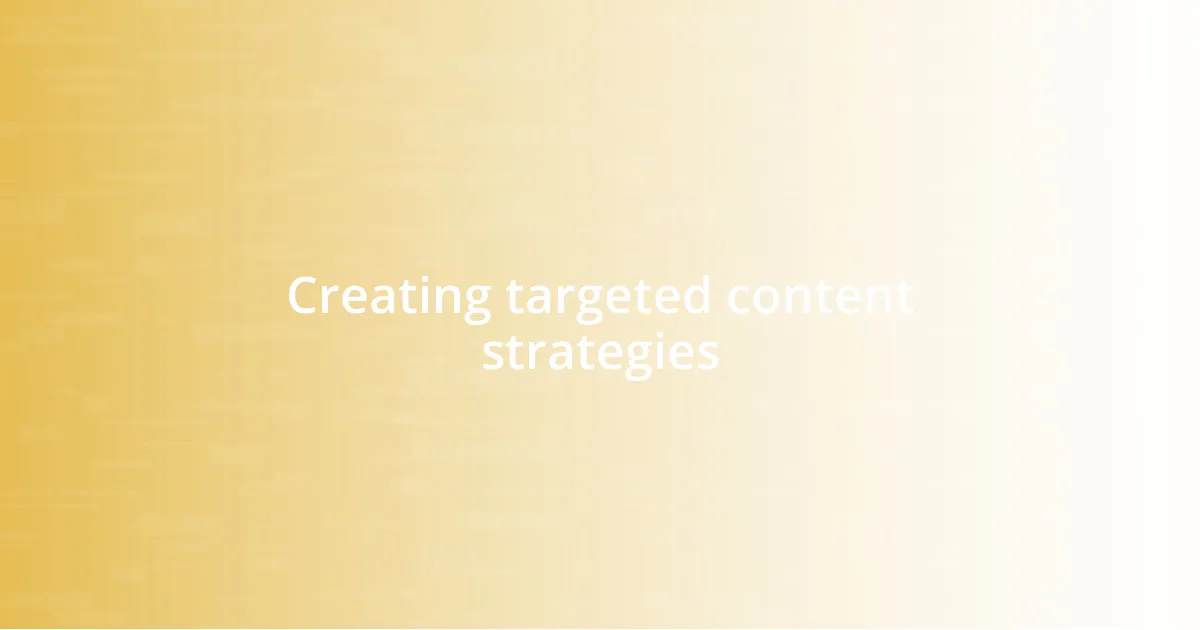
Creating targeted content strategies
Creating targeted content strategies requires a nuanced understanding of fan preferences. I once collaborated with a brand that launched a campaign based on fan-driven themes, and the response was incredible. By curating content that echoed fans’ interests—liking their favorite genres or themes—we saw engagement levels soar. It’s fascinating how tailoring content not only boosts interactions but also fosters a sense of community among fans.
In another instance, we took a deep dive into analytics from previous events, uncovering which artists and styles resonated most. I vividly recall an online discussion where fans passionately debated their ultimate concert setlists. This inspired me to propose a series of content pieces that allowed them to vote on their favorite tracks, ultimately shaping future performances. Have you ever considered how much your choices could influence an artist’s work? When fans feel like their voices matter, they become invested.
Lastly, I’ve found that incorporating storytelling into content strategies creates a richer engagement experience. I once shared a personal story about a transformative concert experience and invited fans to share theirs in return. The flood of responses was a testament to the emotional connections that music can create. This exchange not only built a deeper relationship with the audience but also provided a wealth of anecdotes to draw from in future campaigns. Engaging fans through their stories can transform targeted content strategies into something truly meaningful.
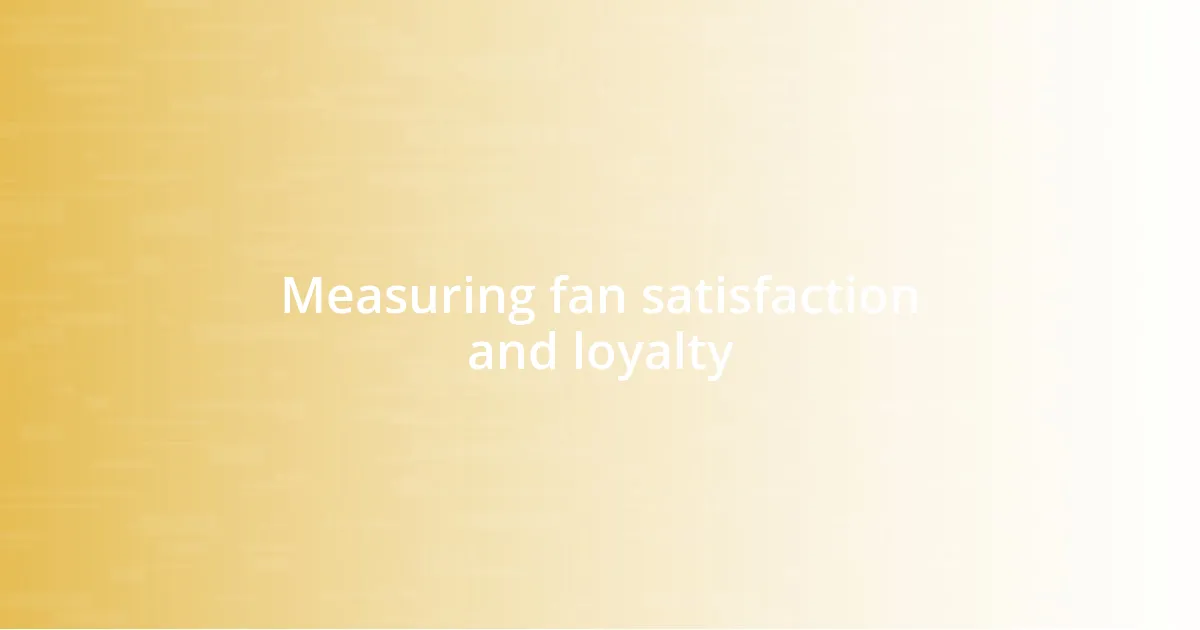
Measuring fan satisfaction and loyalty
Measuring fan satisfaction and loyalty goes beyond just collecting data; it’s about tapping into the emotions that drive those numbers. I remember attending a fan event where we set up a digital kiosk for instant feedback. Fans could rate their experience on a scale and even leave quick comments. The results revealed not just satisfaction levels, but a surprising loyalty rooted in shared experiences—like the joy of singing along to a favorite song. Isn’t it intriguing how a simple interaction can reveal so much about what fans truly care about?
Analyzing social media engagement has also been a critical component in measuring fan loyalty for me. I recall noticing a dip in interactions during a particular promotional period. This led me to dive deep into fan comments and engagement metrics. When I responded to fans directly about their concerns, it reignited their enthusiasm. This experience showed me that measuring loyalty isn’t just about numbers; it’s about understanding the narratives and emotions behind those interactions. Have you ever thought about how much a direct response can transform a fan’s perception?
Furthermore, I’ve experimented with loyalty programs that reward fans for their engagement. In one case, I devised a point-based system where fans earned rewards for attending events, sharing content, or providing feedback. The excitement around these rewards sparked conversations among fans about their loyalty and what the brand meant to them. The insight I gained was profound—when fans feel appreciated, their loyalty transforms from passive to active engagement. Reflecting on your experiences, how do you think rewards shape your connection with the brands you love?




